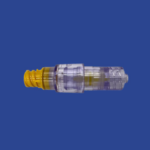scott@vtx-cpd.com
Forum Replies Created
-
AuthorPosts
-
Replying to Dan T. 03/09/2024 - 17:12
I agree!
Jenny has a wonderful way of reassuring us too! I have also done some personal coaching with Jenny and she has a wonderful way of making things make sense!
Scott 🙂
Replying to Dan T. 03/09/2024 - 17:24
Hi Dan,
Thanks for your thoughtful response. Core values can be a powerful tool for both individuals and organizations, even though they can sometimes feel hard to define or align perfectly within a team. I love how you highlighted the challenge of balancing personal values with organizational ones. When those values are communicated clearly, even if not perfectly aligned, they can still provide that crucial reference point for decision-making and a sense of belonging.
I’m also curious to hear how others have approached identifying and integrating their own values into their work.
Best,
ScottThanks Harry!
This is really interesting! How easy to do think it is to learn this sort of technique? I always lack confidence assessing fluid overload in this sort of way?
Scott 🙂
Hello!
Great question! I will try and get lots of input on this one for you!
I look forward to the discussion.
Scott 🙂
Replying to Matteo R. 02/09/2024 - 16:28
Thank you so much Matteo!
We appreciate you!
Scott 🙂
Replying to Inge B. 02/09/2024 - 11:54
Thank you for your brilliant contribution.
We appreciate you!
Scott 🙂
Replying to Janette B. 02/09/2024 - 10:28
Thank you so much for your amazing contribution!
We appreciate you!
Scott 🙂
Replying to Jack Pye 02/09/2024 - 08:50
Thank you for being awesome!
Scott 🙂
Replying to Inge B. 02/09/2024 - 11:56
On that note…
Just had a look, and MILA make these:
https://www.milainternational.com/iv-break-away-device.html
Scott 🙂
Replying to Natalie Niven 20/08/2024 - 22:11
Hello Natalie!
Thank you for your response. You are absolutely correct! I’ll share a bit about what we did next.
The abnormalities found during the cat’s physical examination and the results of his LDDST support a diagnosis of Cushing’s syndrome due to a pituitary cause. The presence of a 12mm diameter bilateral adrenalectomy, as documented on abdominal ultrasound, strongly suggests pituitary-dependent hyperadrenocorticism. Although the absence of a visible pituitary mass does not rule out a pituitary adenoma, documentation of an appropriately elevated endogenous ACTH would be preferable before considering surgical management. After discussing all available treatment options (including medical management with trilostane, radiation therapy, hypophysectomy surgery, and bilateral adrenalectomy), the owner is currently considering proceeding with hypophysectomy surgery. We have advised starting insulin treatment for Norman’s diabetes mellitus (suspected to be secondary to insulin resistance resulting from his hyperadrenocorticism). Additionally, we have recommended initiating oral trilostane treatment for the cat to try to stabilize his hyperadrenocorticism and diabetes mellitus as much as possible before hypophysectomy surgery.
This is only the second cat I have ever seen with Cushing’s. Cool case!
Scott 🙂
Replying to Rodolfo L. 27/08/2024 - 16:45
Welcome Rodolfo!
We are so lucky to have you here!
Thanks again for working with us.
Scott 🙂
Replying to Kerida Shook 25/08/2024 - 17:33
Hello Kerida!
I hope you are safe and well!
Thanks for sharing your experience with Librella and Solensia—it’s always helpful to hear how these treatments are working in real-world cases. I completely understand your cautious approach with Solensia. It seems like it has made a significant difference in your cat’s quality of life despite the side effects and using it on an as-needed basis sounds like a thoughtful strategy. For elderly cats, especially those where NSAIDs aren’t a viable option, Solensia can indeed be a godsend, offering pain relief without the same renal risks. It’s always a balancing act. Thanks again for sharing—this is valuable insight for anyone considering these treatments!
Thanks again.
Scott 🙂
Replying to Kerida Shook 25/08/2024 - 17:09
Hi Keri,
It’s wonderful to see you here, and we really appreciate your support with the VTX. I’m so happy that Aksel is safe and well—that must have been such a relief! Thank you for sharing your thoughts on cats being the “women” of vet med—there’s definitely a lot to unpack there!!! Please feel free to ask any questions you have at any time; we’re happy to help. I’m really excited to have you here, and thanks so much for all your support!
Cheers,
Scott 🙂
Hi Rosanna,
Thank you so much for your brilliant question! We really appreciate your support for the dentistry course and your kind words. Your feedback means a lot to us.
If you have any other feedback, whether good or bad, please don’t hesitate to share it with us. We’re always eager to hear how we can improve things and make the course even better for everyone.
I’ll make sure Ingrid sees your question, and we’ll get back to you as soon as possible.
Thanks again!
Best regards,
Scott
Replying to Rosie Marshall 23/08/2024 - 19:44
Hey Rosie!
I hope you are well. Thank you for sharing your experience. It’s a sobering reminder of the potential risks associated with spring-loaded gags, especially in cats. I’ve heard similar concerns from others, and it seems that the consensus is to be very cautious or avoid them altogether. I typically stick to shorter gags as well when necessary, and I’ve found that being mindful of the pressure applied and the duration of use can help minimize risks. Personally, I prefer to use a cut-off needle cap when needed, as it’s a safer alternative that still gets the job done.
Scott 🙂
-
AuthorPosts


